
in 2009, wheat production in Virginia was concentrated on the Coastal Plain, especially the Northern Neck and Eastern Shore
Source: USDA National Agricultural Statistics Service, Corn and Soybean Distribution Maps

in 2009, wheat production in Virginia was concentrated on the Coastal Plain, especially the Northern Neck and Eastern Shore
Source: USDA National Agricultural Statistics Service, Corn and Soybean Distribution Maps
The English colonists introduced wheat into Virginia in the 1600's. The grain helped the colonists become self-sufficient in food production by the 1630's. By 1739, Virginia was exporting large amounts of wheat to the West Indies.1
In the latter half of the 1700's, Virginia farmers (particularly George Washington) diversified away from tobacco and started growing more wheat. Unlike tobacco, wheat exports did not require the same financial entanglements with English merchants, who might sell the tobacco at a price considered to be too low by the planters in Virginia.
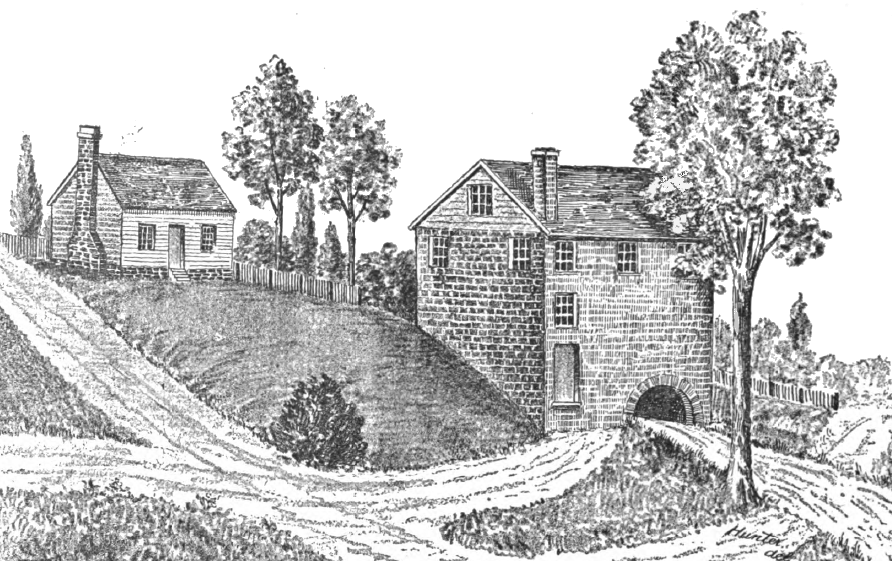
George Washington shifted away from tobacco and chose to grow wheat and other grains on his Northern Virginia farms around Mount Vernon, ultimately building a mill on Dogue Creek and then a distillery
Source: Some Old Historic Landmarks of Virginia and Maryland, Washington's Mill at Epsewasson, Head of Dogue Bay (p.77)
By the 1850's, the Shenandoah Valley was a major wheat-growing area. Wheat was the principal crop for 96% of the Shenandoah Valley farmers before the Civil War.2
The wheat was produced for sale, not local consumption. Alexandria, Richmond and Norfolk developed into major wheat exporting ports. Most of Virginia's "internal improvements" (turnpikes, canals, and railroads) were designed to connect the wheat-growing and tobacco-growing regions in the Piedmont/Shenandoah Valley with ports on the Atlantic seaboard.
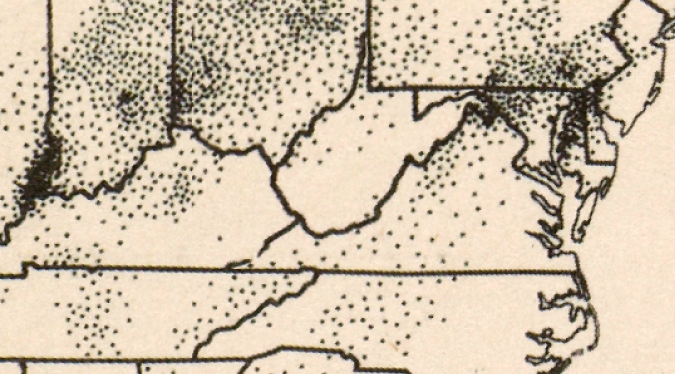
by 1889, most wheat in Virginia was grown west of the Blue Ridge
Source: Atlas of the Historical Geography of the United States, Wheat, 1859 (Plate 143q, digitized by University of Richmond)

Cyrus McCormick, living near Steeles Tavern in the Shenandoah Valley, helped to automate the labor-intensive wheat harvesting process
Source: The Chesapeake & Ohio Railway Directory, Containing an Illustrated History and Description of the Road (p.119)
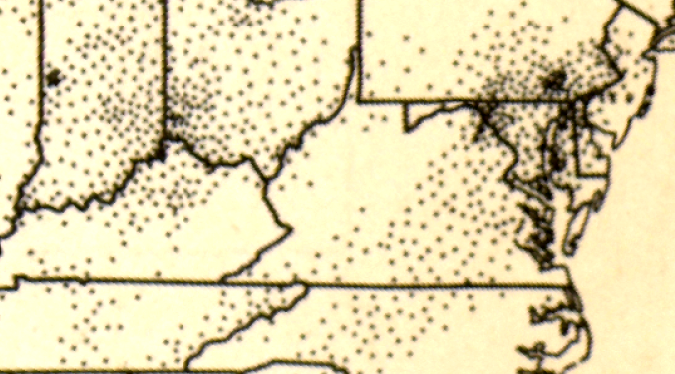
in 1859, just before the Civil War, the Piedmont and even portions of Tidewater were still major wheat-growing regions in Virginia
Source: Atlas of the Historical Geography of the United States, Wheat, 1859 (Plate 143q, digitized by University of Richmond)
Today, wheat production in Virginia is concentrated in the Northern Neck. Wheat is a domesticated grass. In Virginia, most wheat fields in Virginia today are soft red winter wheat. Seeds are planted in the Fall, in September-November. After germination and a short period of growth, the wheat plants go dormant. They serve as a cover crop to reduce erosion and retain moisture during the winter. In the Spring, the wheat is plowed under so another crop (usually corn or soybeans) can be planted in the field, but in some counties the wheat allowed to mature and harvested in June-July.3
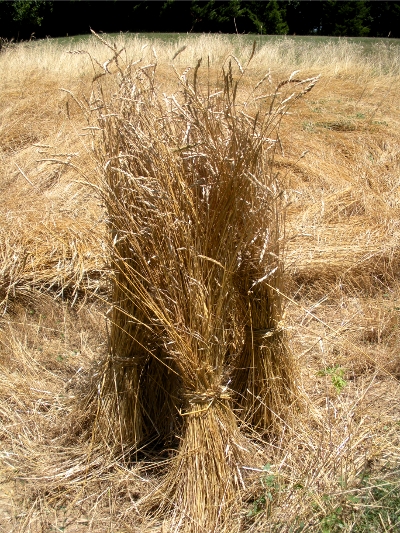
"spelt" wheat, growing at Frontier Culture Museum in Staunton
The Eastern Virginia Agricultural Research and Extension Center in Warsaw (Richmond County) provides technical assistance on small grain field research, including how to maximize production from no-till fields (where soil is not plowed, minimizing labor/energy costs and retaining soil moisture).
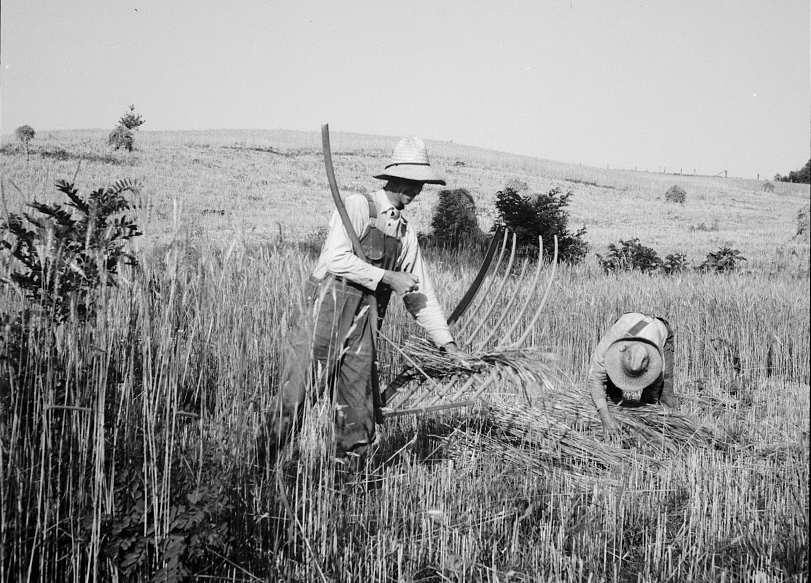
harvesting wheat in 1936 without modern machinery
Source: Library of Congress, Cradling wheat near Christianburg, Virginia (by Dorothea Lange, 1936)
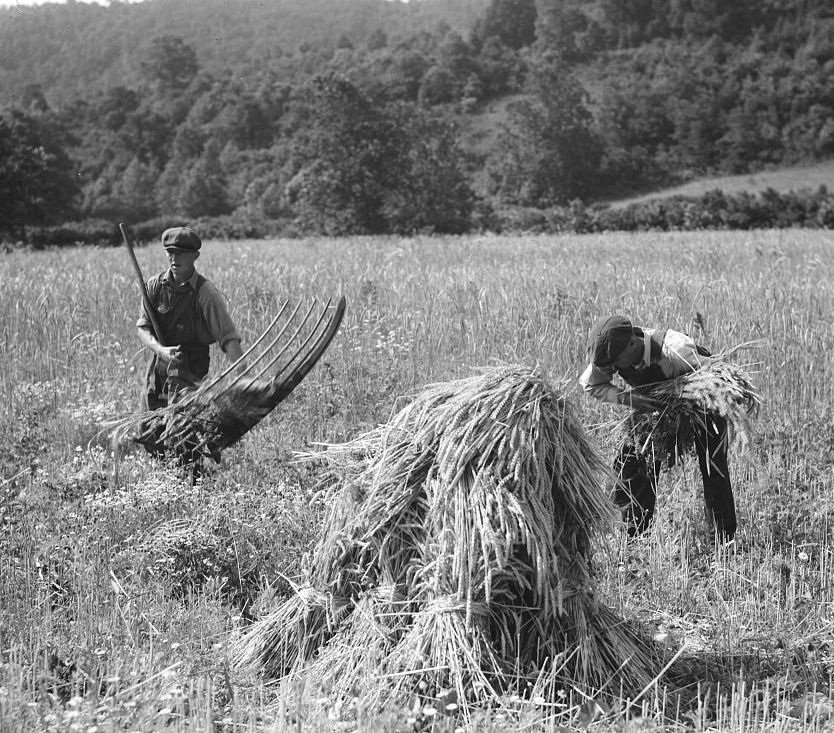
unthreshed wheat was stacked in the field in stocks before being moved into long-term storage
Source: Library of Congress, Virginia wheat field (by Dorothea Lange, 1936)
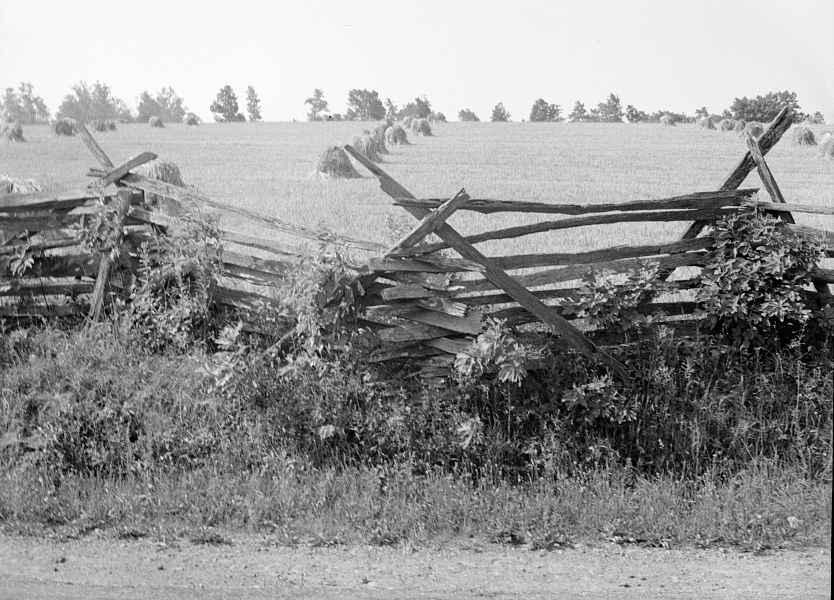
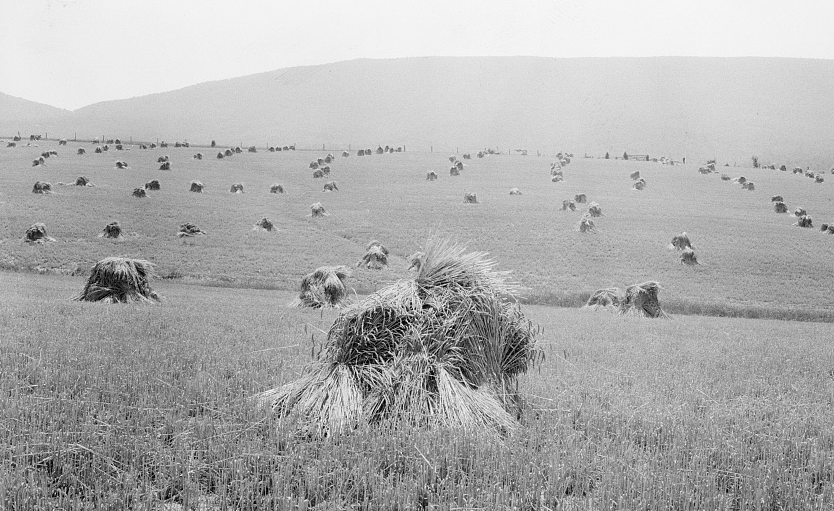
wheat stacked in the field after cutting, before modern combines simplified harvest
Source: Library of Congress, Cradling wheat near Sperryville, Virginia and Virginia wheat. Vicinity of Sperryville (by Dorothea Lange, 1936)

wheat field (Richmond County)
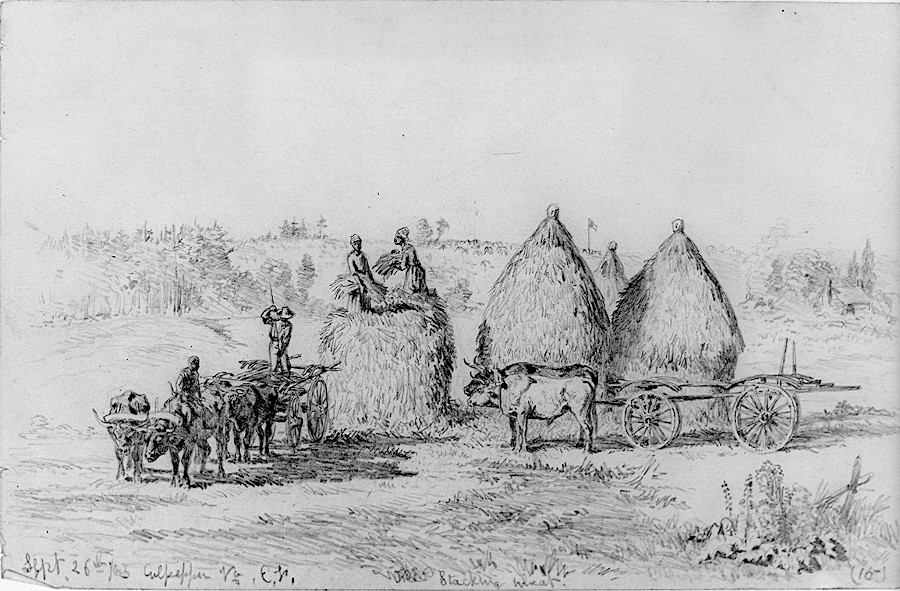
most enslaved people were forced to work in farm fields
Source: Slavery Images: A Visual Record of the African Slave Trade and Slave Life in the Early African Diaspora, Stacking Wheat, Culpeper, Virginia, 1863
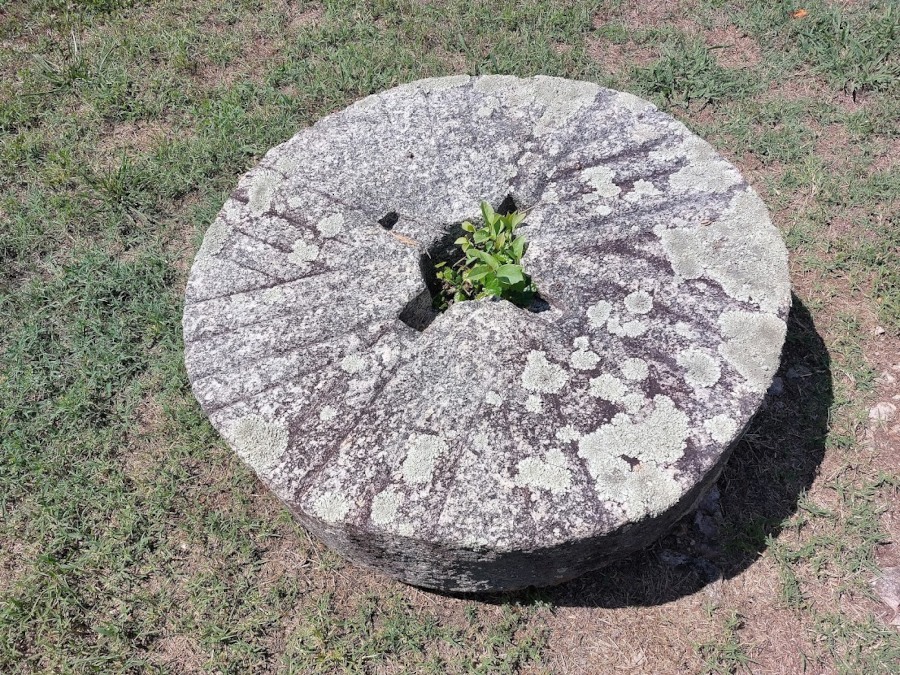
wheat was ground into flour by stone grist wheels, which today are mostly historic relics (Prestwould Plantation in Mecklenburg County)
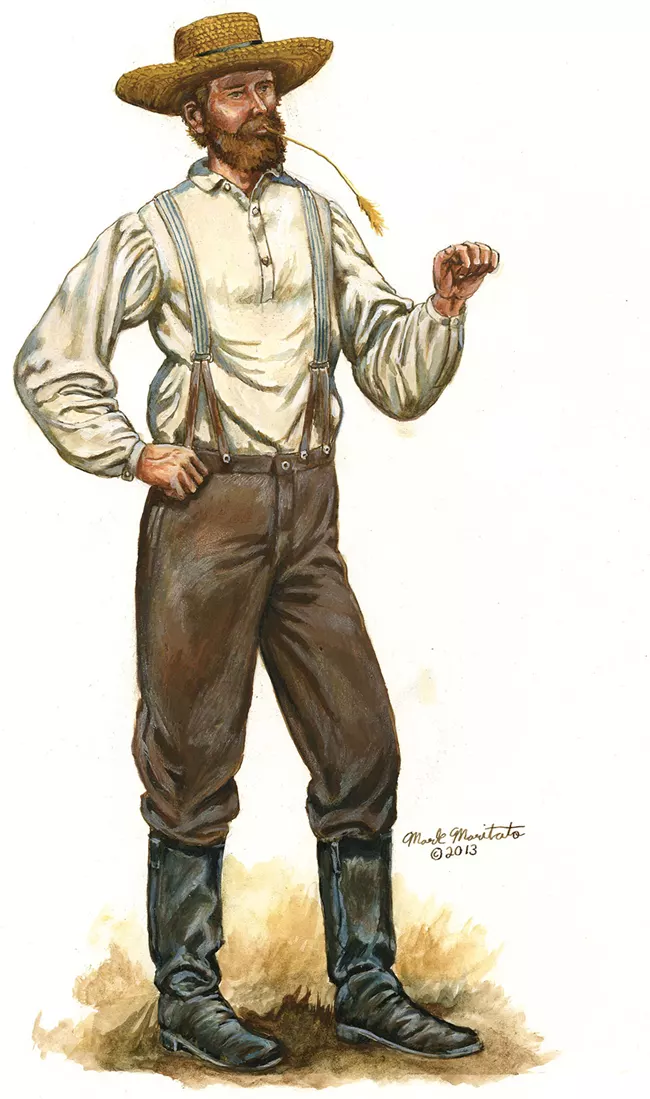
by 1850, wheat was the primary crop for 96% of the farmers in the Shenandoah Valley
Source: National Park Service, Breadbasket of the South